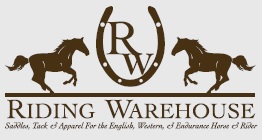 "Life's so different than it is in your dreams..." This is a line for a Tom Waits song. A propos Tom's observation, here is my Devon hunter breed show story. We went to Devon on May 29. In the weeks prior, I indulged in an active fantasy life centering around Riley's performance at Devon. For the record, this fantasy is a lot like last year's breed show fantasies, but more glam.
"Life's so different than it is in your dreams..." This is a line for a Tom Waits song. A propos Tom's observation, here is my Devon hunter breed show story. We went to Devon on May 29. In the weeks prior, I indulged in an active fantasy life centering around Riley's performance at Devon. For the record, this fantasy is a lot like last year's breed show fantasies, but more glam.
The pre-Devon fantasy
Riley stands in a perfect conformation pose draped in a tri-color neck ribbon. I'm at the other end of the lead rope, beaming a big smile as the cameras click and the flashes flash. Riley's breeder gazes wistfully at the horse she practically "gave away" to a rookie. A certain other lady who told me that weanling Riley had a throatlatch is also in the crowd, looking vaguely annoyed. As we leave the Dixon Oval, we're confronted with more paparazzi and would-be-Riley-buyers. Blithely I wave them away.
In the weeks before Devon I muse pleasantly on this little dream scenario -- in the car, during meetings, and over my lunchtime can of tuna.
May 28: A telegram from Reality
The day before the show, I get the Devon program. I note twenty-five entries in his class. My belief in the dream falters a little, so I start rethinking it. Okay. Maybe not first place. Maybe he'll place in the top three. The Devon program includes sire/dam info. Wow, look at those heavy-hitter hunter sires, and a few jumpers. All the Gold. Alla Czar. Everest. Consul. Escapade. Contendro, for God's sake. Landkoenig. Well. Dammit. To my dismay, the dream is whittled down to mere wishful thinking.  Devon Day!
Devon Day!
How did it go, you ask? Here's a quick run through of the day. To be candid, it was not very dreamlike.
3:40am: I awaken several hours early, and in the interest of letting Bob sleep, I decide to get up before the alarm. I dress, drive to the barn, and pluck Riley and his pasturemate from the darkened pasture. I prep for the show and then start some barn chores to pass time.
6:00am: I meet the braider. This is where the dream really breaks down. Riley has been a complete snot about all preparatory grooming. He finds the braiding process too tiresome to bear, and he is in constant motion. We try a twitch, but the joke is on us--Riley is perfectly capable of misbehaving with his lip in a vise. Finally we discover that tapping his face lightly with a crop has a mesmerizing effect on him. So I tap. And I tap. And I tap. When I think he's calm, I try to stop tapping, but then the spell is broken and he returns to his complete jackass MO. It takes two hours to braid his mane. When we are done I cannot feel my fingers and my arm is sore. I do not want to explain to anyone how I got this repetitive motion injury.
10:15am: We arrive at Devon to learn that the classes are running way ahead of schedule. Riley's class was projected to go at 2pm, but it will go no later than 11am. I call my handler. She is on the PA turnpike, 40 minutes away. I tell her the class will start in 35-40 minutes. She suggests I find a backup handler in case her 90 mph cruising speed does not get her to Devon in time. I shove my bewildered horse in his stall without checking for nails, and rush to the entrance gate. I scout for handlers who might pinch hit. Approaching a group of men in blue jackets and khakis, I rehearse my pitch. It feels a little indecent. With awkward urgency, I ask if they might handle my horse, in oh, 30 minutes. Everyone consults their schedule, and one very nice gentleman agrees to handle my horse. 11:00am. My trainer/handler arrives well in time, as it turns out, and she handles him beautifully. He is in NonTB two year old colts, an impressive class of twenty horses. Two lines apple-shaped butts stretch across the ring, and many could pass for 4-5 years old instead of two. Riley, in his eternal growth spurt, is a pencil-necked geek in comparison. But when they trot by the judge, Riley's trot is lovely. I feel his gaits would certainly fall in the top eight of this class. Yet when they pick the top eight, he is not among them.
11:00am. My trainer/handler arrives well in time, as it turns out, and she handles him beautifully. He is in NonTB two year old colts, an impressive class of twenty horses. Two lines apple-shaped butts stretch across the ring, and many could pass for 4-5 years old instead of two. Riley, in his eternal growth spurt, is a pencil-necked geek in comparison. But when they trot by the judge, Riley's trot is lovely. I feel his gaits would certainly fall in the top eight of this class. Yet when they pick the top eight, he is not among them.
Noon: As we're preparing to leave the grounds, another handler speaks to my handler. He pays her, and Riley, an unsolicited compliment. I frankly eavesdrop as he tells her Riley was a nice horse, shown well. "You should have placed," he said.
We're home by 2pm: Riley looks exhausted, and he leans into the cross-ties and closes his eyes while I remove his braids. He looks grateful to be home. Within a few minutes of going back to his stall, he's stretched out asleep. I drive home and do the same.
Dreams are for suckers
Does they day sound awful? It wasn't! Like so many horse show experiences, it's nerve-racking while going on, and a lot of fun to reflect on later, when your horse is home and safe. If the dream didn't quite work out, at the end of the day, I was happy with how things turned out, because:
- Who cares about ribbons anyway? The ribbons at Devon are crappy looking, IMHO. Nice golden foil doo-dah in the center of the rosette, but aside from that, strictly dimestore. I'm sorry, someone had to say it.
- Braids are beautiful. Riley's hunter braids were stunning. All 35 of them, perfect and identical and tinged with the tears of a perfectionist braider. The tail was nice too.
- Manners matter. My handler again showed her rapport with my horse; inside the oval they were a lovely picture. Riley stood like a champ through blowing newspapers and the antics of other youngsters. He loaded and unloaded easily. He did drool on the handler's new suit, but that was the only breach of manners.
- Grooming supplies. My Showsheen was probably approaching its expiration date, and it needed to be used anyway.
 I haven't yet downloaded the video from Devon. Here's still from the video at Mile View Farm. Doesn't he look great? What a good boy.
I haven't yet downloaded the video from Devon. Here's still from the video at Mile View Farm. Doesn't he look great? What a good boy.

































































